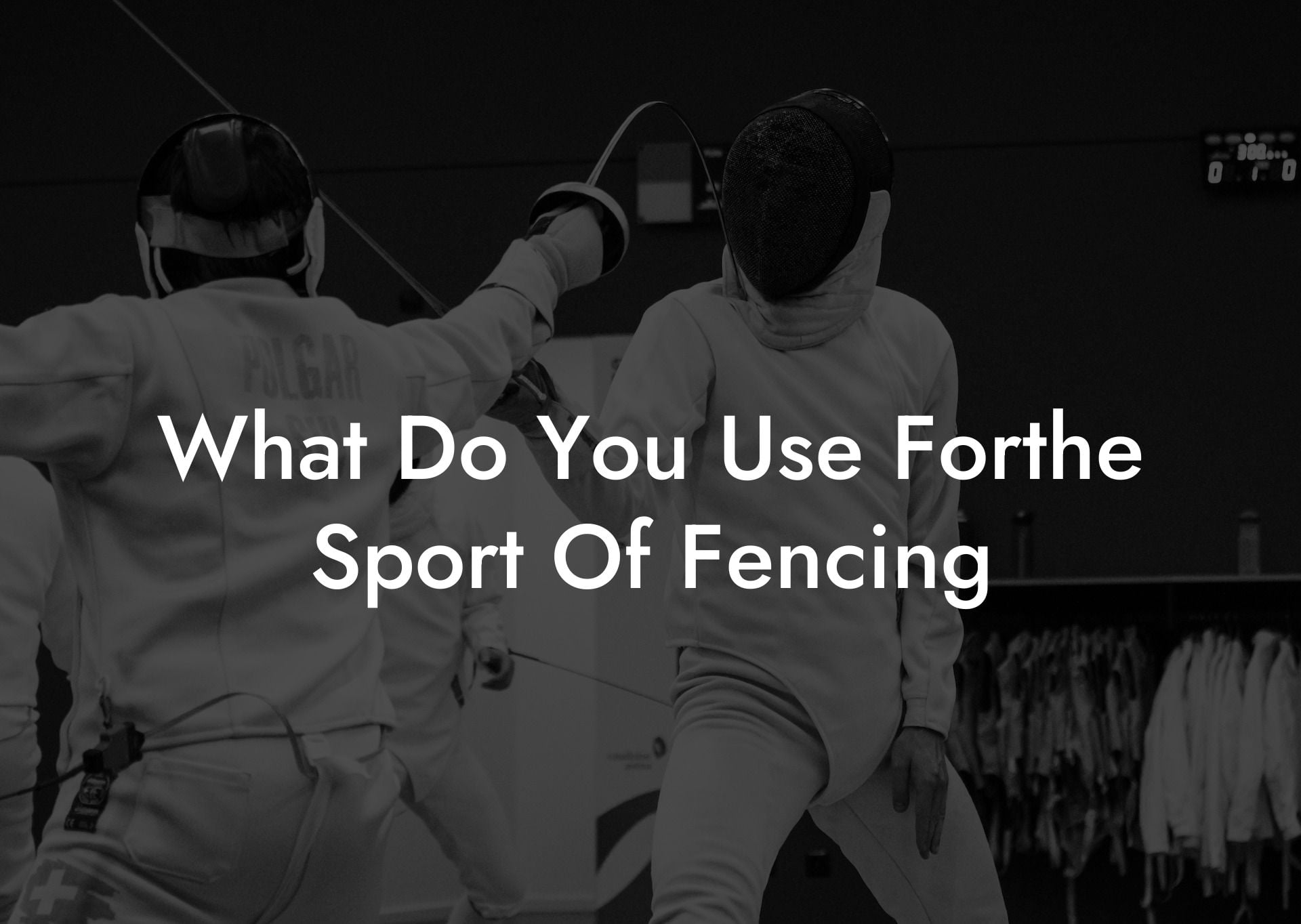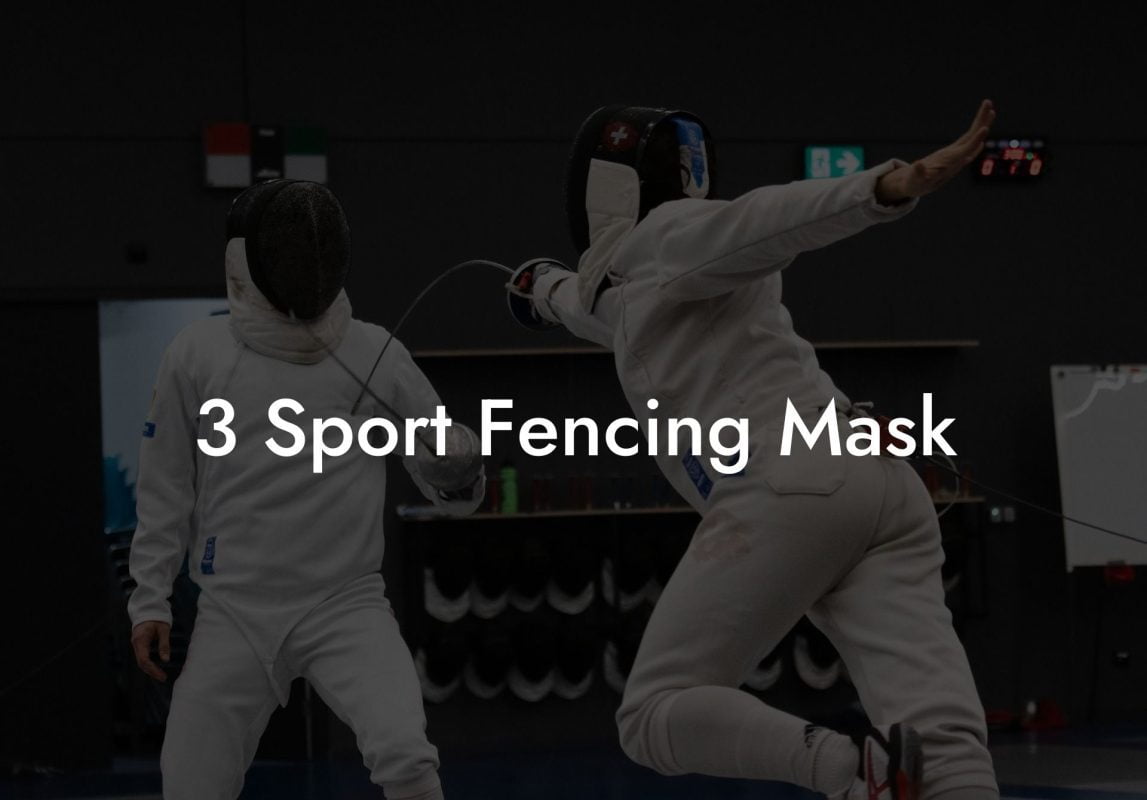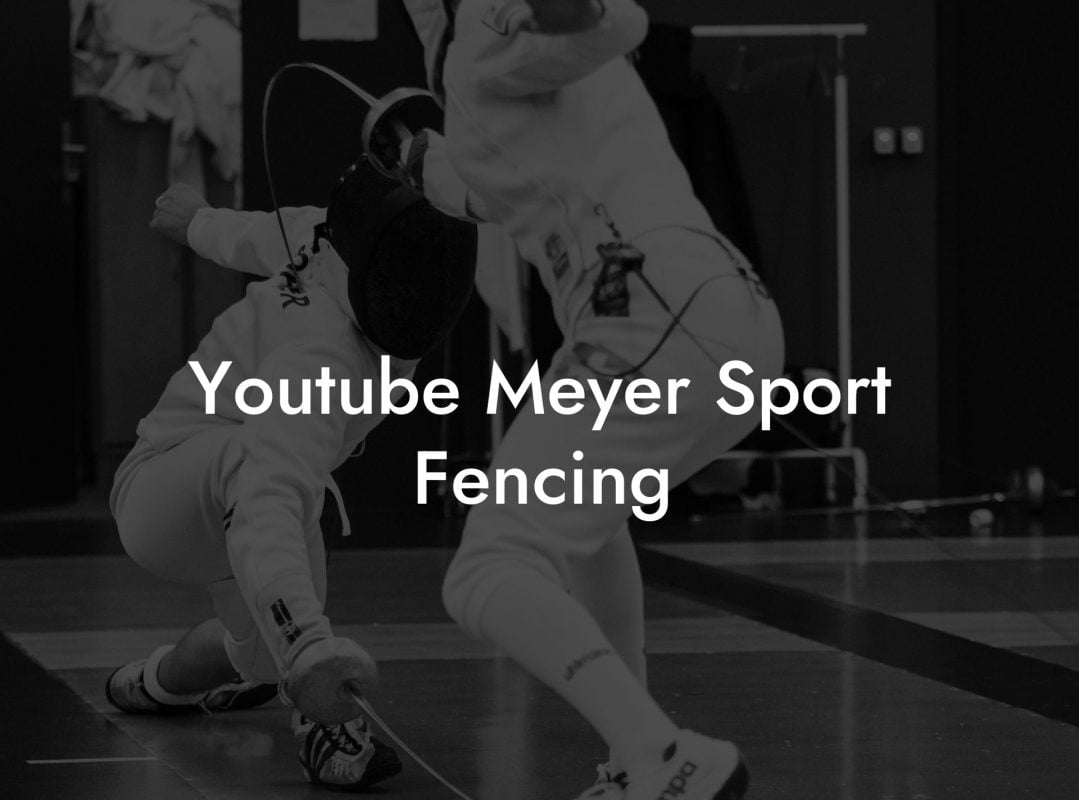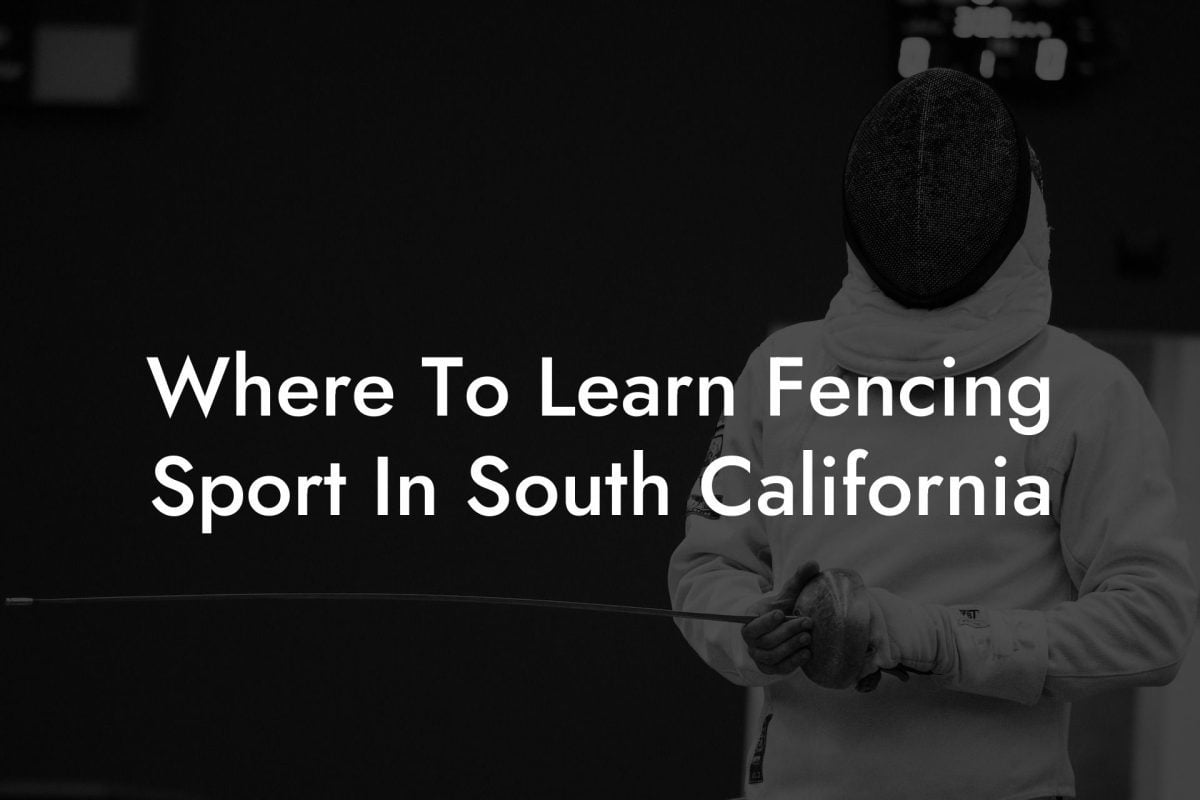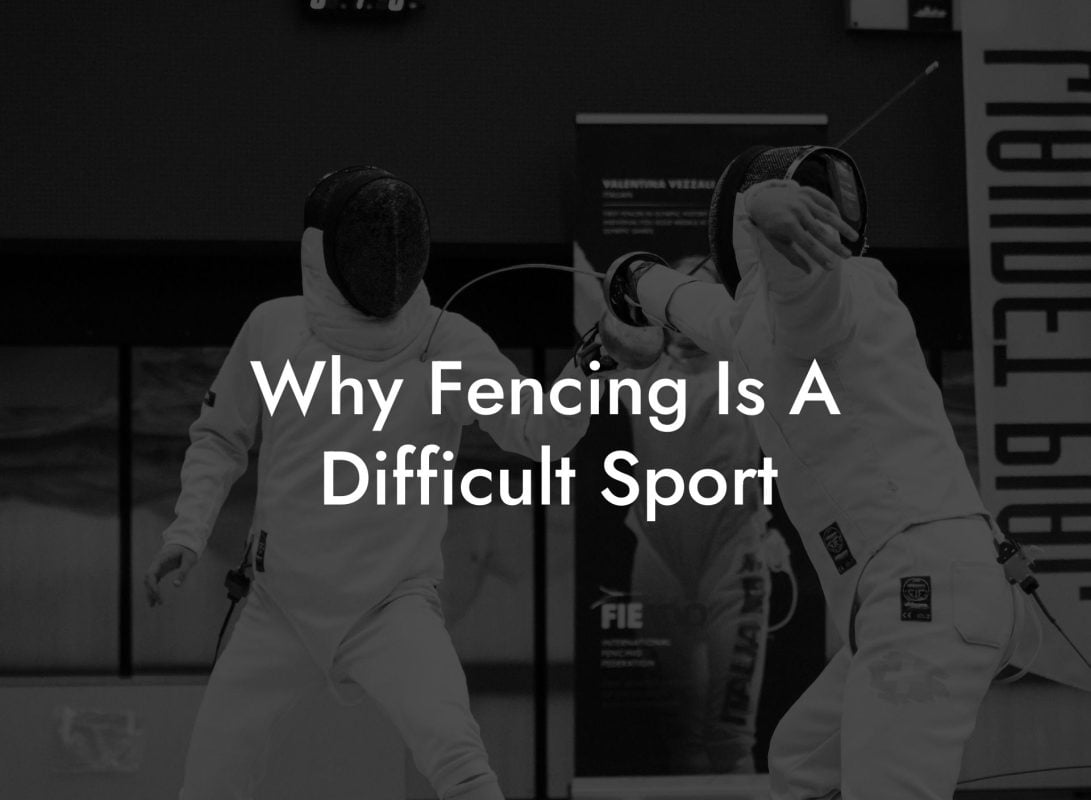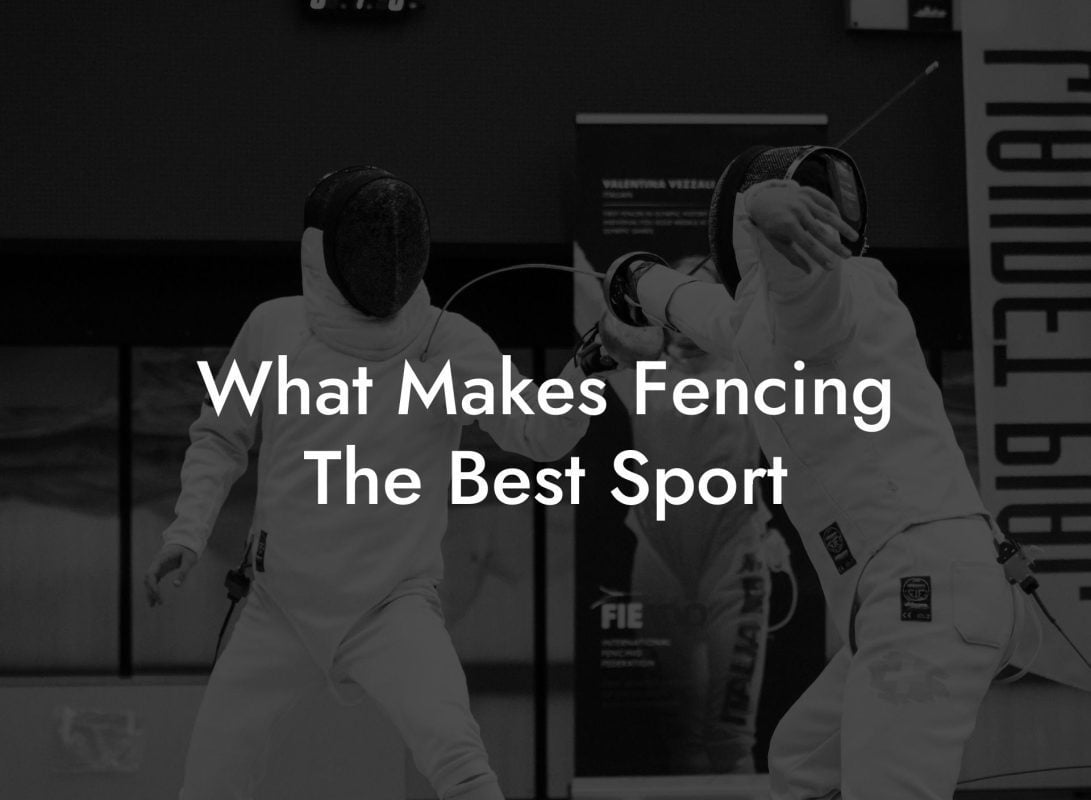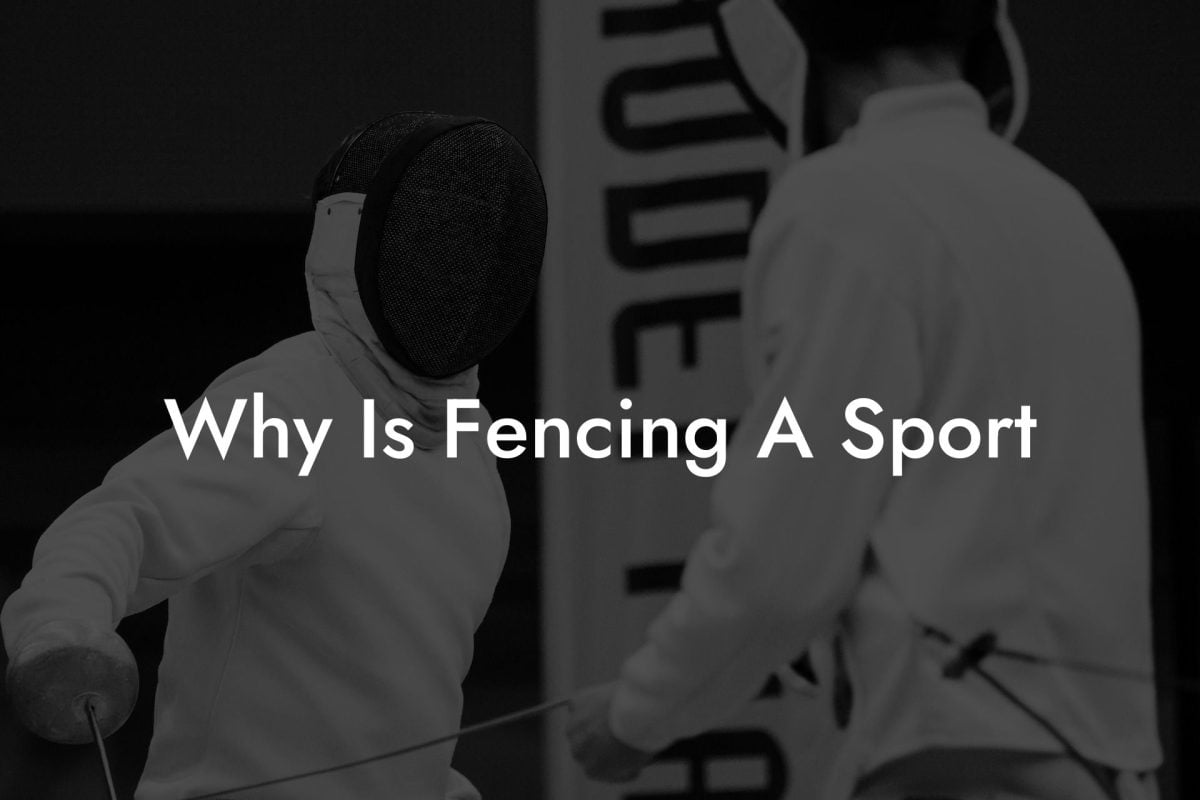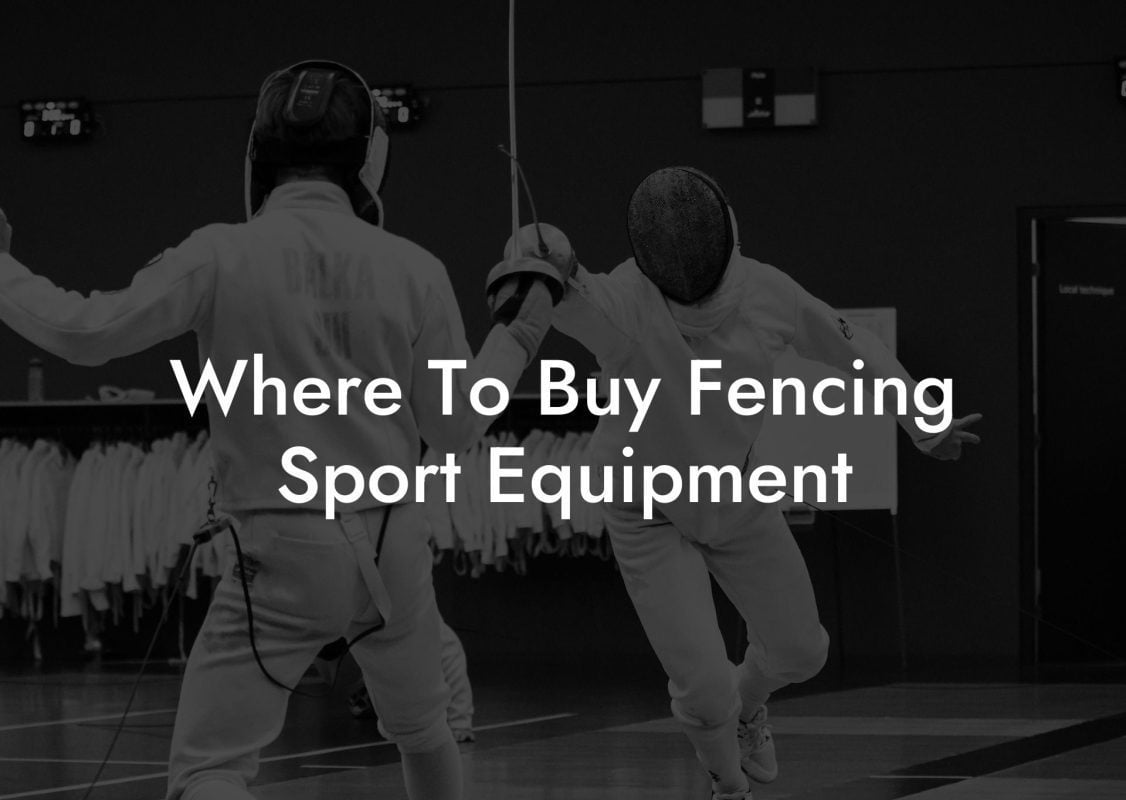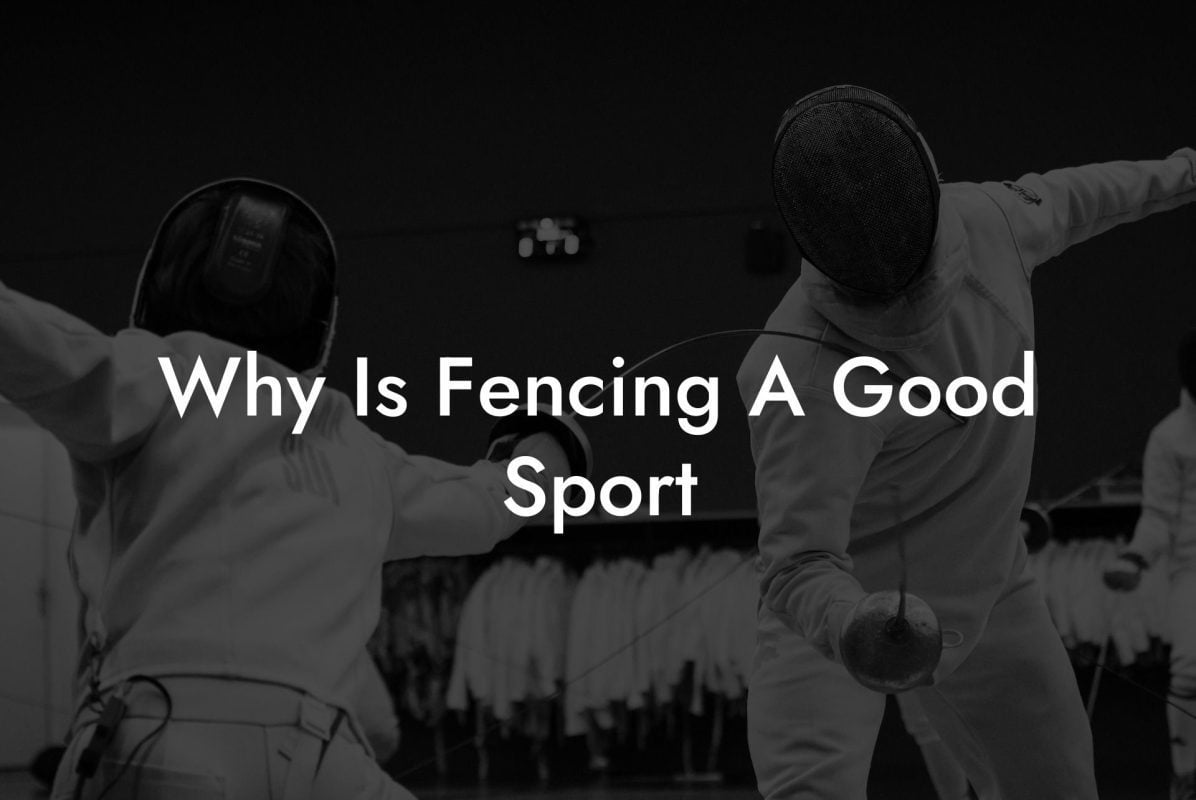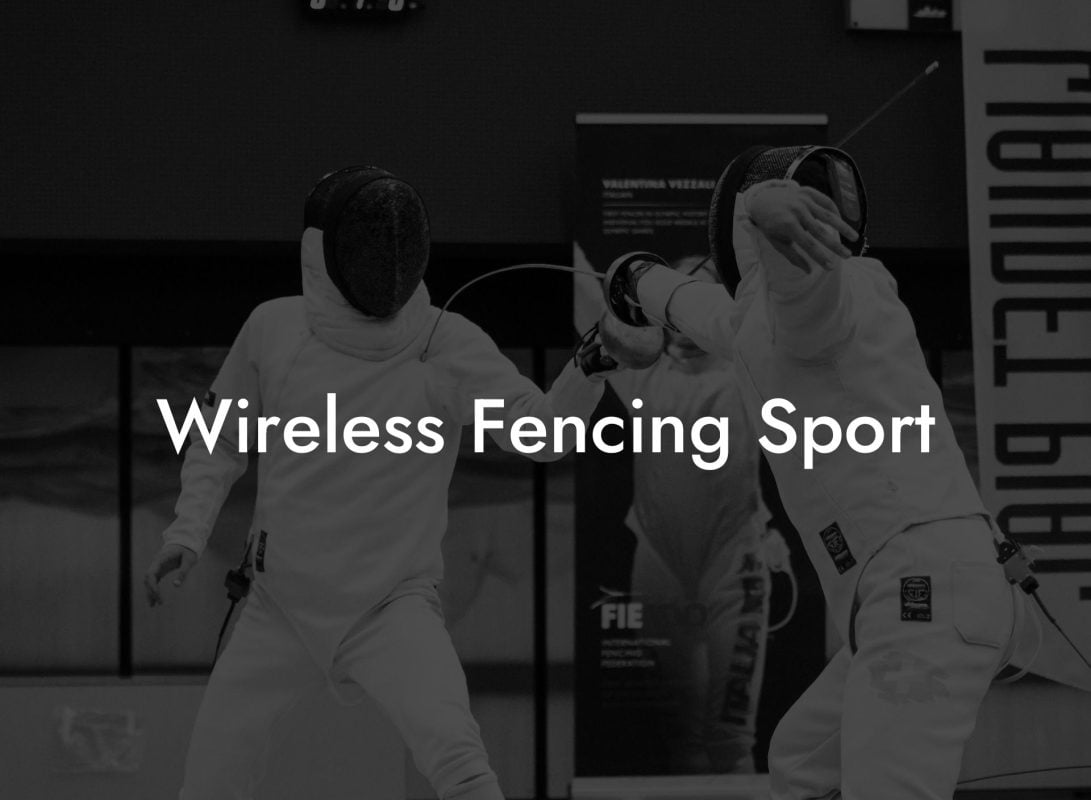The sport of fencing is a thrilling and sophisticated activity that has been enjoyed by many for centuries. As you embark on your journey to become a skilled fencer, one of the first steps is to familiarize yourself with the various types of equipment used in this captivating sport. In this article, we'll delve into the essentials of fencing gear and provide you with everything you need to know – from foils to protective wear and beyond.
What Do You Use Forthe Sport Of Fencing Table of Contents
The Three Types of Fencing
When discussing equipment, it is important to first understand the three main types of fencing: foil, epee, and sabre. Each type has its unique set of rules, techniques, and equipment requirements.
Foil Fencing
Foil is the most popular type of fencing, especially for beginners. The objective is to score points by touching your opponent with the tip of the foil within a designated target area – the torso. Foil includes a system of rules and strategies called "right of way," which determines who has priority in attacking.
Epee Fencing
Epee fencing is similar to foil but has some key differences. The target area is the entire body, and there is no "right of way" system. Points are scored by touching the opponent with the tip of the epee. Epee requires fencers to be more strategic and patient than foil fencers.
Sabre Fencing
Sabre is the most aggressive and fast-paced type of fencing. The target area includes the head, torso, and arms. Unlike foil and epee, points can be scored by touching the opponent with both the tip and the edge of the sabre. Sabre also follows a "right of way" system similar to foil fencing.
Fencing Weapons
Each type of fencing has a specific weapon.
Foil
The foil is a lightweight weapon with a thin, flexible blade. It features a small, round guard to protect the hand and a rubber or plastic tip for safety.
Epee
The epee is slightly heavier than the foil, with a stiffer and broader blade. It has a large, bell-shaped guard to protect the hand and a spring-loaded tip to detect touches.
Sabre
The sabre is similar in weight to the foil but with a curved blade designed for slashing motions. It features a large guard that covers the knuckles and extends over the back of the hand.
Fencing Protective Gear
All fencing styles require specific protective gear to ensure fencer safety.
- Fencing Mask – A metal mesh mask designed to protect the fencer's face and head.
- Plastron – A half-jacket worn under the main fencing jacket to provide additional protection on the weapon arm side.
- Fencing Jacket – A padded jacket that covers the torso, typically made from heavy, puncture-resistant fabric.
- Glove – A padded glove worn on the weapon hand.
- Breeches – Knee-length pants made from durable fabric to protect the legs.
- Socks – Long socks that cover the area between the breeches and shoes.
- Shoes – Fencing shoes designed for stability, grip, and flexibility to support quick footwork and lunges.
Additional Equipment
Fencers may also use other accessories to assist them during training and competitions, such as:
- Body Cord – An electrical wire that connects the weapon to a scoring machine for electronic scoring.
- Chest Protector – A plastic plate worn under the jacket to protect the chest area, especially important for women fencers.
- Scoring Machine – A device that registers touches electronically to keep track of points during a bout.
- Tool Kit – A small set of tools for maintaining and repairing fencing equipment.
What Do You Use Forthe Sport Of Fencing Example:
As a beginner fencer, you might start with a basic set of gear, including a foil, fencing mask, plastron, jacket, glove, breeches, socks, and shoes. This equipment will provide you with protection and allow you to focus on mastering the techniques of foil fencing. As you advance and potentially experiment with other fencing styles, you may invest in additional weapons and protective gear, such as an epee or sabre, to suit your preferred discipline.
Now that you have a comprehensive understanding of the essential equipment used in the sport of fencing, you are one step closer to becoming a proficient fencer. With determination and practice, you can conquer the world of fencing one touch at a time. Don't hesitate to share this informative guide with fellow fencing enthusiasts and explore other in-depth articles on Anchorage Fencing Club to further enhance your knowledge and love for the sport. Happy fencing!

